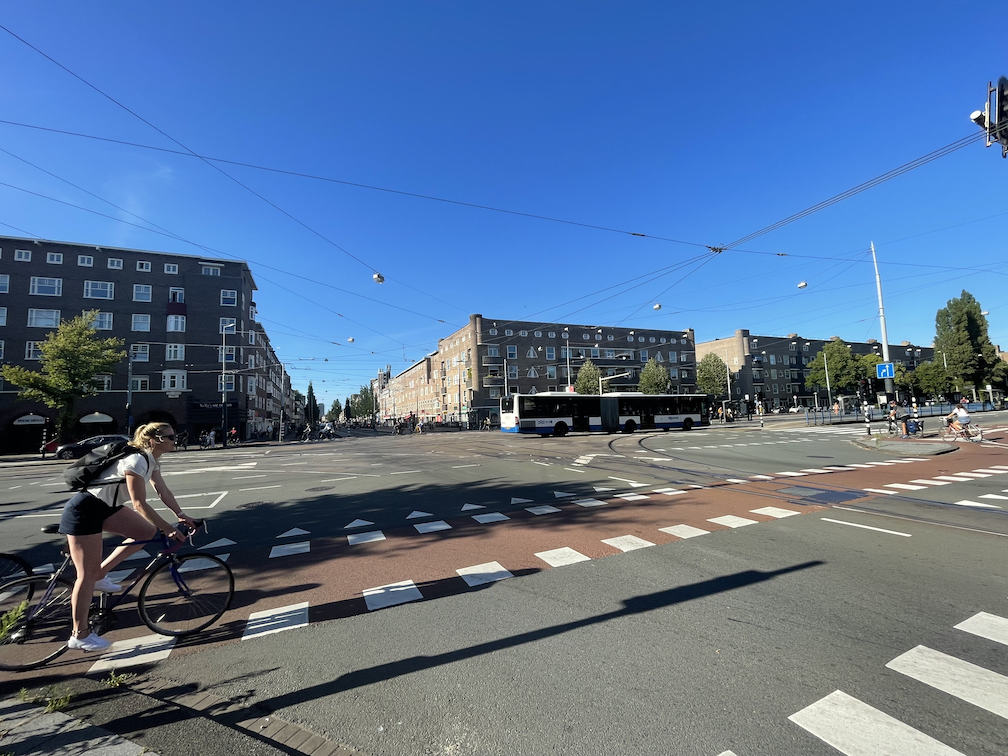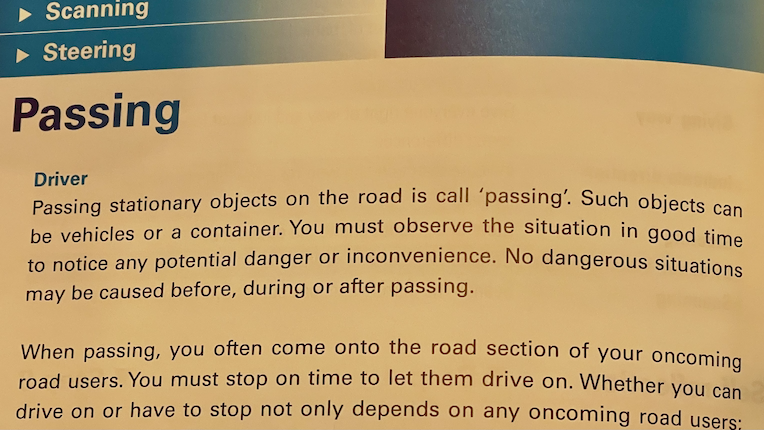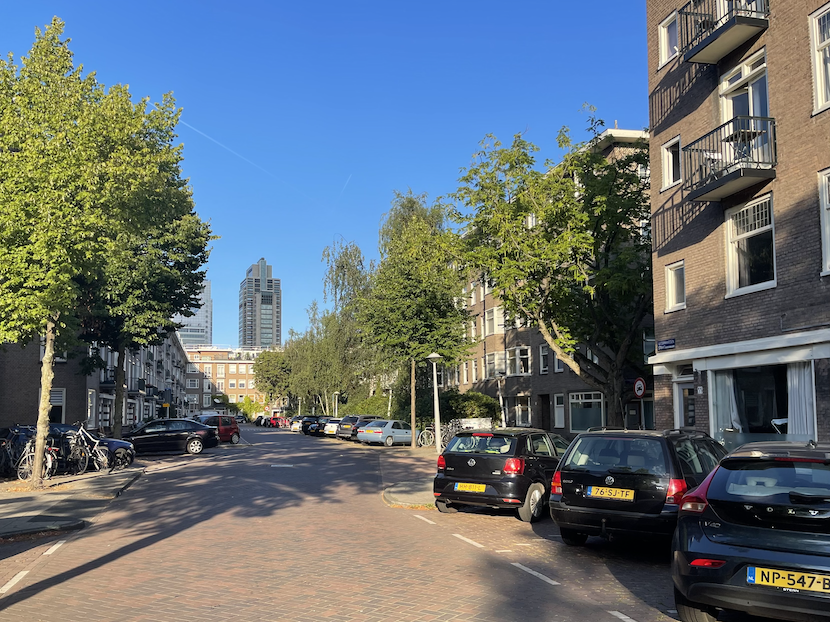
My previous blog post detailed the Sisyphean ordeal of passing the theory exam to get my Dutch driver’s license—navigating a terribly-written, horribly-translated textbook and website to pass an exam with questions so arbitrary or unfair that they sometimes read like absurdist literature.

It was all so patently ridiculous that I figured the practical portion of the process—where I actually drove a car—would be simple by comparison. The free trial lesson at my neighborhood traffic school didn’t dissuade me of this notion: I hopped in a nice Audi SUV with a cheerful instructor who navigated me around the neighborhood, kindly pointed out my mistakes, and identified the old habits I’d need to unlearn. It was an encouraging first session.
My friends, this is what we call a “bait and switch.”
I dropped over €1000 for the first ten hours of instruction. I received a second textbook, titled (I kid you not) “That’s Learning to Drive!” Just like its prequel, it was bad content that had been translated worse, with the peculiar Dutch proclivity for over-using the word “already” and the phrase “in good time.”

I returned to the office for my first lesson—not with the friendly fellow in his Audi, who wouldn’t be available for months, but with René, a charmlessly frank guy with a jean jacket and a Renault Clio.

René drove us to a nearby neighborhood for our first two-hour session. In a chilling omen, before I even began driving, he corrected the way that I got into the car. (Always walk counter-clockwise, against oncoming traffic.) Then came a lesson on how to physically hold the stick shift: You shift into first or second gear with a flat hand, into third gear with the heel of your palm, etc.
I’m not kidding.
Before I start properly bitching about the boot camp that followed, I’ll allow that driving in The Netherlands is genuinely a lot more challenging than it is in the US. With few exceptions, American roads are for American cars, and if you’re on foot, then you’d better skedaddle across before Ray in his F-150 mows you down while he’s halfway through sending a text. Dutch roads meanwhile are a jumble of cars, trucks, pedestrians, bikes, mopeds, scooters, trams, buses, trains, and weird European stuff like electric delivery vans and “microcars.” It’s no small feat to share a road with literally all of the above during rush hour.
Another factor is that the Dutch aren’t so keen on signs to mark every traffic situation. Many intersections are completely unmarked, governed only by the rule to yield to traffic coming from the right. This applies even if you’re an 18-wheeler and they’re a bike, even around blind corners, and no matter how much it feels like you’re on the “major” road.

Back to boot camp. At first René coached me through obscure tricks like how to hold the steering wheel or down-shift through curves. Then came lessons in various parking scenarios and navigating complex intersections. I received constant, brusque warnings and reminders about literally everything: DON’T TURN THE WHEEL WHILE STOPPED, YOU’LL RUIN THE TIRES! Since not even the slightest mistake was allowed to slide, his critiques often overlapped and resulted in more mistakes.
Silence, meanwhile, was high praise; I learned to feel proud of myself if there were ten seconds of quiet in the car. This teaching method has been embraced in a thousand fields by a million wanna-be Cobra Kai instructors. René never actually raised his voice or made me do knuckle push-ups, but he sure as shit didn’t embrace positive feedback as a teaching tool. In one of our later lessons, after navigating a tricky intersection, he said “Now we’re getting somewhere!” and I was literally shocked.
I would anticipate each weekly lesson with the identical brand of dread I felt before swimming lessons when I was six. I only reached the verge of tears once (practicing parallel parking, something I’ve prided myself on in the past) but would walk home bearing prodigious amounts of flop sweat.
I would now like to repeat that, if I’d come to Holland on a work visa, I could have simply walked into the government office and exchanged my Texan license for a Dutch one. Since I’m here with a partner visa, despite being the exact same human being, I had to go through the entire process—a process which, René mentioned in our first lesson, is one of the most difficult in the world.
René’s point of pride was his so-called “observation technique”—having hyper-awareness of every part of my environment at all times. This is important, naturally, but manifests as a dizzying number of checks. If I edged the car to the right side of the lane without first looking over my shoulder, I failed: what if there had been a bike there? Well, there couldn’t have been, because I’d just driven past that spot and (despite what you’d think for Holland) bikes don’t just materialize out of the ether. But René doesn’t believe in this thing we call “object permanence.” Check that blind spot, and then check all three of your mirrors for good measure.
The required checks compounded without ever combining. I had to look in nine different directions before pulling the car into a parking space, and René would call out every time I missed one. For another example, here are René’s verbatim instructions as we changed two lanes on a highway:
“Front-inner, front-outer, front inner-outer-that-angle1, signal, and go. Again: front-inner, front-outer, front inner-outer-that-angle, signal, and go.”
And right now you might be thinking: Of course you should double-check these things! Cars are scary and dangerous to others! But my brain was operating at the very limits of its ability to absorb information, to a point of feeling dangerous—I was so busy checking mirrors that I didn’t actually grasp the situation. Later I heard some good advice: “At some point during all of those required checks, be sure to actually look.”
Amsterdam is really not a big city—you could comfortably fit it into central Austin—and we traveled the length and breadth of it, including odd industrial corners with weird traffic situations that were seemingly designed to test driving students. Those roads were crawling with learner cars and their “L” placards, their drivers surely in various stages of panic.
The last weeks of our time together, René and I finally developed a rapport. He would replace barked orders with meaningful glares. Close to the exam date, he even said things that by his standards were a pep talk: “You know how to do this” or “You’ll probably pass.” But the stakes were high: the next available test wasn’t until October.
Like an execution, the fateful day arrived. We drove to the licensing office and met my examinator, and René sat in the back seat while we drove around town for 30-ish minutes. Despite all the rehearsal I made some mistakes, but by the grace of King Willem-Alexander, they weren’t enough to sink me. 28 years after getting my driver’s license, I got my driver’s license. And it only took me 40 hours of lessons—apparently the average student requires 86 hours.

I’m not convinced that this isn’t all a big scam. Not the “fake driving school” kind, but the systemic kind, where the rigorous exam and difficult instructors produce a near-endless stream of mistakes to correct and further lessons to schedule.
And to be clear, I’m in favor of a rigorous process. My driving lessons circa 1994 were with my high-school football coach who would decades later inspire my Coach Rookard character. After six or eight weeks of lessons, when the day came for my driving exam, Coach Sammons met me at the high school and had me drive home. That was it. I passed.
So as fondly as I remember Coach Sammons, experiencing something challenging is ironically a relief. I feel a camaraderie with my fellow drivers knowing what we all went through, and a good bit safer as a result.

But c’mon guys. I can hold the stick shift however I please.